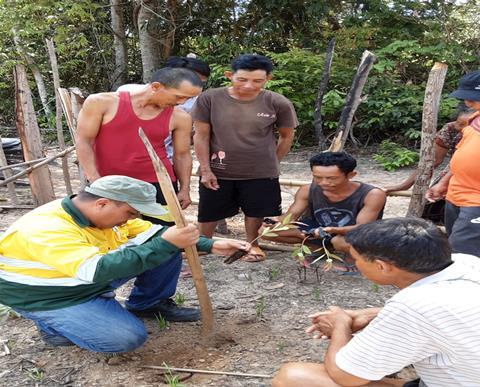Forestry investors must consider a range of ESG issues for both direct and indirect investments. Such issues may present material risks to forestry operations and the success of an investment if managed improperly.
Conversely, robust ESG risk management can be a significant source of value creation. Notable ESG issues include:
| Environmental | Social | Governance |
|---|---|---|
|
|
|
How these factors impact a forestry investment can ultimately depend on how they are managed, as illustrated by the examples below.

Biodiversity and ecosystems
Risks
Reputational, commercial and potential legal risks stemming from monocropping, over harvesting (leading to deforestation) or poor protection of flora and fauna.
Example: Canada
In Canada, forestry manager Resolute Forest Products had sustainability certifications covering almost 10m hectares of forests in Ontario and Quebec suspended by the FSC. The FSC claimed, among other things, that Resolute had not presented an adequate plan for the protection of woodland caribou, considered a threatened species by the Canadian government. The suspension cost Resolute business relationships with clients who would no longer buy timber-based products from non-certified sources.
Opportunities
Forestry conservation investment strategies and products that deliver market returns are available in certain markets. More generally, strong environmental stewardship can enhance the underlying value of timberland, as well as help to secure a price premium for timber-related products through certification programmes, and support sustainable long-term forest growth.
Example: US
In the US, the Lyme Timber Company has developed an investment strategy to sell working forest conservation easements (WFCEs), primarily to public agencies or conservation non-governmental organisations. WFCEs permanently protect the lands from development, conserving important natural values of a forest property, but allow income generation from sources such as sustainable timber harvesting, recreational leasing, and the sale of ecosystem services. In California, several investment managers such as Campbell Global offer investment products that provide direct climate benefits by sequestering carbon in sustainably managed forests, including through the state’s cap-and-trade emissions trading scheme.

Relations with local communities
Risks
Poor relations with local communities and other core stakeholders can create operational and financial risks. For example, protests and blockades, and the potential sabotage of operations, can require significant time and resources to manage such issues.
Example: Mozambique
The Church of Norway’s investment fund, Opplysningsvesenets Fond (OvF), said its forestry investments in Niassa, Mozambique, did not meet appropriate ESG standards. OvF’s managers in Mozambique were criticised for harming local communities by carrying out land grabs outside of designated forestry planting areas. They were accused of planting forest on land previously used for subsistence agricultural purposes, threatening local food supplies. These allegations triggered protests, including the uprooting of planted trees by locals, corruption investigations against local managers, and delays to the FSC certification process for the holdings, among other problems.
Opportunities
Engaging with local communities can bring a range of benefits, such as stronger land tenure, an improved local operating environment and potential sources of labour or support services.
Example: New Forests
In Southeast Asia, investment manager New Forests uses “participatory mapping” practices to help identify opportunities to align local community objectives with its sustainable forest management practice. This helps to support community development through economic growth and income that aligns with local norms and needs.

Labour standards
Risks
Working in forests and their related activities (such as logging and saw and pulp mill operations) is dangerous without appropriate health and safety measures in place. Forestry investors and managers expose themselves to reputational, legal and financial risks if working conditions do not meet best practice standards, regardless of jurisdiction.
Opportunities
Positive and safe working conditions and ongoing engagement with the labour force reduce the risk of health and safety incidents, as well as boost overall morale and productivity. Similarly, greater workplace diversity has been shown to support stronger long-term financial performance.
Example: Brazil and US
As part of the certification process for plantations it manages in Brazil, Lacan Investimentos worked with third-party contractors to improve working conditions. This included ensuring that workers were provided with the right protective clothing, were housed adequately, and that labour practices and relations were fully documented. In the US, Resource Management Services has developed a scheme to encourage female and minority participation in the forestry industry, and ultimately drive long-term performance, by providing scholarships for individuals from such groups taking forestry-related undergraduate courses.

Anti-bribery and corruption
Risks
Opportunities Anti-corruption enforcement has tightened substantially in many jurisdictions in recent years, with international cooperation, and the international reach of some legislation, having also increased. It is therefore even more important that investors and managers understand the potential for corruption and bribery risks to manifest across all the jurisdictions they are exposed to. In forestry, these risks are most prevalent in relation to land titling, securing operating concessions, and the mixing of legal and illegally-sourced timber products.
Example: Peru
Several incidents in Peru have highlighted the prevalence of corruption, human rights abuses and the potential for illegally-sourced wood to enter mainstream supply chains. For example, there have been allegations that national and local government officials have accepted bribes to award forestry concessions illegally, and that logging companies have sponsored the murder of indigenous and local community leaders who have opposed their operations. Forestry companies have also been accused of mixing illegally-sourced wood with wood from certified sources.
Opportunities
Managers and companies with strong governance cultures and track records on anti-corruption efforts may stand to gain in the long term if competitors are proven to have been involved in bribery and corruption. This could be through the purchase of distressed assets, such as land or concessions that are obtained by illegal means and re-opened to the market. Alternatively, it could be a matter of attempting to stand out in the market by, for example, owning certified forests as a way of attracting institutional capital because of the general level of stewardship that that implies compared to non-certified holdings in certain jurisdictions.

Responsible investment in forestry
- 1
- 2
- 3
 Currently reading
Currently readingESG factors in forestry investing
- 4
- 5
- 6
- 7

















